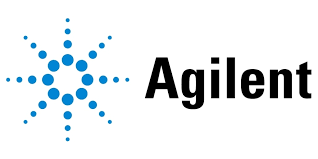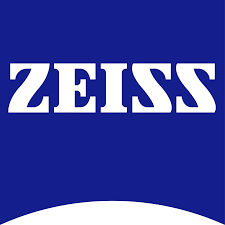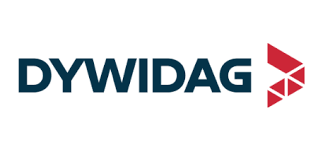Pulmonary Devices Market Report
Published Date: 15 December 2025 | Report Code: pulmonary-devices
Pulmonary Devices Market Size, Share, Industry Trends and Forecast to 2033
This report provides a comprehensive analysis of the Pulmonary Devices market, examining various segments and geographic regions with data forecasts from 2023 to 2033. It delves into market trends, growth rates, industry dynamics, and future opportunities in the sector.
| Metric | Value |
|---|---|
| Study Period | 2023 - 2033 |
| 2023 Market Size | $10.50 Billion |
| CAGR (2023-2033) | 6.8% |
| 2033 Market Size | $20.64 Billion |
| Top Companies | Philips Healthcare, ResMed, AstraZeneca, Boehringer Ingelheim |
| Last Modified Date | 15 December 2025 |
Pulmonary Devices Market Report (2023 - 2033)
Pulmonary Devices Market Overview
Customize Pulmonary Devices Market Report market research report
- ✔ Get in-depth analysis of Pulmonary Devices market size, growth, and forecasts.
- ✔ Understand Pulmonary Devices's regional dynamics and industry-specific trends.
- ✔ Identify potential applications, end-user demand, and growth segments in Pulmonary Devices
What is the Market Size & CAGR of Pulmonary Devices market in 2023?
Pulmonary Devices Industry Analysis
Pulmonary Devices Market Segmentation and Scope
Tell us your focus area and get a customized research report.
Pulmonary Devices Market Analysis Report by Region
Europe Pulmonary Devices Market Report:
The European Pulmonary Devices market holds a value of $3.00 billion in 2023, potentially reaching $5.90 billion by 2033. Factors such as stringent regulatory frameworks favoring medical innovation, combined with a strong focus on respiratory health and environmental conditions, impact market dynamics significantly. The UK and Germany are notable players in this region.Asia Pacific Pulmonary Devices Market Report:
The Asia Pacific region is anticipated to exhibit substantial growth from a market value of $2.00 billion in 2023 to $3.94 billion by 2033. Increasing urbanization, rising prevalence of respiratory illnesses, and a growing elderly population are contributing factors. Moreover, healthcare reforms are enhancing access to advanced pulmonary care devices across countries like China and India.North America Pulmonary Devices Market Report:
North America remains a leading market with an estimated value of $3.50 billion in 2023, projected to reach $6.88 billion by 2033. The growth is fueled by advanced healthcare infrastructure, high disposable income, and a well-established distribution network. Increased adoption of home care services and telemedicine is also propelling market advances in the U.S.South America Pulmonary Devices Market Report:
In South America, the Pulmonary Devices market is valued at $0.93 billion in 2023, expected to grow to $1.82 billion by 2033. The region's growth is primarily driven by rising health awareness and the need for effective management of chronic respiratory diseases amidst resource constraints. Countries like Brazil and Argentina are key markets here.Middle East & Africa Pulmonary Devices Market Report:
In the Middle East and Africa, the market is valued at $1.07 billion in 2023, expanding to $2.10 billion by 2033. Increased investment in healthcare infrastructure and the prevalence of respiratory diseases drive market growth, alongside a gradual shift towards preventive healthcare measures in countries like South Africa and the UAE.Tell us your focus area and get a customized research report.
Pulmonary Devices Market Analysis By Device Type
Global Pulmonary Devices Market, By Device Type Market Analysis (2023 - 2033)
The device type segments demonstrate significant variation in growth. Inhalers, which hold a market size of $7.17 billion in 2023 and are projected to reach $14.09 billion by 2033, dominate the market. Nebulizers and oxygen concentrators also show strong growth trends driven by increasing demand for at-home respiratory therapies. The significant share of inhalers (68.26% in 2023) showcases their essential role in asthma management.
Pulmonary Devices Market Analysis By Application
Global Pulmonary Devices Market, By Application Market Analysis (2023 - 2033)
By application, asthma care leads the market with a size of $7.17 billion in 2023. COPD management follows with $2.40 billion, reflecting the growing necessity for targeted treatments. Inhaled medications are increasingly being recognized for their benefits across diverse respiratory conditions. The segments illustrate a well-defined scope for growth, especially with the aging global population.
Pulmonary Devices Market Analysis By Usage
Global Pulmonary Devices Market, By Usage Market Analysis (2023 - 2033)
Home care usage dominates the market, valued at $7.17 billion in 2023 and expected to maintain a share of 68.26% through 2033. This is followed by hospital use at $2.40 billion. The shift towards home care solutions is a notable trend, especially post-COVID-19, as patients prefer to manage their health conditions in more comfortable settings.
Pulmonary Devices Market Analysis By End User
Global Pulmonary Devices Market, By End-User Market Analysis (2023 - 2033)
End-user segmentation shows significant reliance on hospitals and homecare providers, with hospitals representing a substantial value of $7.17 billion in 2023. Homecare solutions have garnered attention for their effectiveness and convenience, indicating a shift in how pulmonary care is administered across the globe. This segment is expected to grow rapidly, forecasted to continue holding a significant share of the market.
Pulmonary Devices Market Trends and Future Forecast
Tell us your focus area and get a customized research report.
Global Market Leaders and Top Companies in Pulmonary Devices Industry
Philips Healthcare:
Philips is a leading player in the pulmonary devices market known for its innovative breathing solutions, particularly focusing on apnea care and respiratory therapy equipment.ResMed:
ResMed specializes in cloud-connected devices for people with obstructive sleep apnea or chronic obstructive pulmonary disease (COPD), providing comprehensive management systems.AstraZeneca:
AstraZeneca, while primarily a pharmaceutical company, plays a vital role in the pulmonary sector through its portfolio of respiratory medications and inhaler technologies.Boehringer Ingelheim:
Boehringer Ingelheim is engaged in the development of medications and devices for COPD management, contributing significantly through their innovative delivery systems.We're grateful to work with incredible clients.









FAQs
What is the market size of pulmonary Devices?
The global pulmonary devices market is currently valued at approximately $10.5 billion for 2023 and is projected to grow at a CAGR of 6.8%, reaching significant figures by 2033 as demand continues to rise.
What are the key market players or companies in this pulmonary Devices industry?
The pulmonary devices industry is dominated by companies such as Philips Healthcare, ResMed, and Medtronic, known for their innovations in device technology and patient care solutions. These players help shape market trends and drive competitive strategies.
What are the primary factors driving the growth in the pulmonary devices industry?
Key drivers for growth in the pulmonary devices market include an increasing prevalence of respiratory diseases, advancements in technology, and a growing focus on home healthcare solutions as patients prefer receiving care at home.
Which region is the fastest Growing in the pulmonary devices market?
Asia-Pacific is expected to be the fastest-growing region within the pulmonary devices market, projected to grow significantly from $2.00 billion in 2023 to $3.94 billion by 2033, highlighting potential opportunities in emerging healthcare sectors.
Does ConsaInsights provide customized market report data for the pulmonary Devices industry?
Yes, ConsaInsights specializes in providing customized market report data tailored to client specifications. This includes detailed insights on market trends, competitive landscape, and forecasts specific to the pulmonary devices industry.
What deliverables can I expect from this pulmonary Devices market research project?
Deliverables from the pulmonary devices market research project typically include comprehensive reports, data analysis, market projections, regional insights, and actionable recommendations tailored to the needs of stakeholders and decision-makers.
What are the market trends of pulmonary devices?
Current trends in the pulmonary devices market include a shift towards home-based care, increased investment in smart inhalers, and digital health monitoring systems, all contributing to enhanced patient outcomes and engagement.
